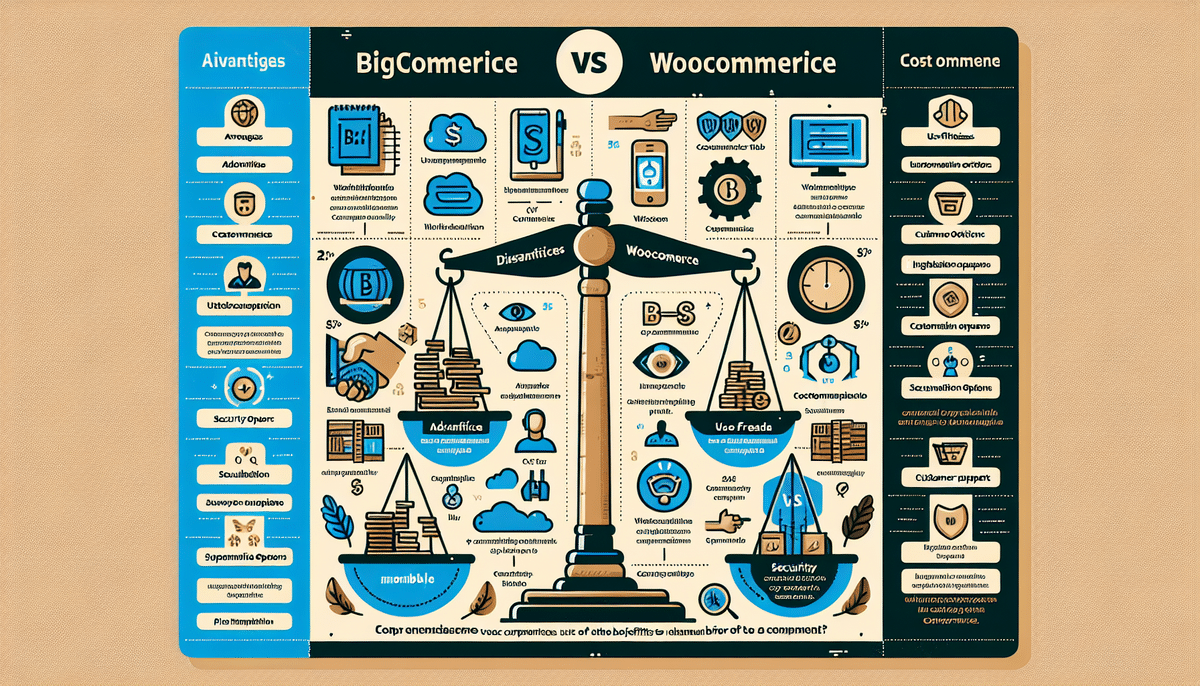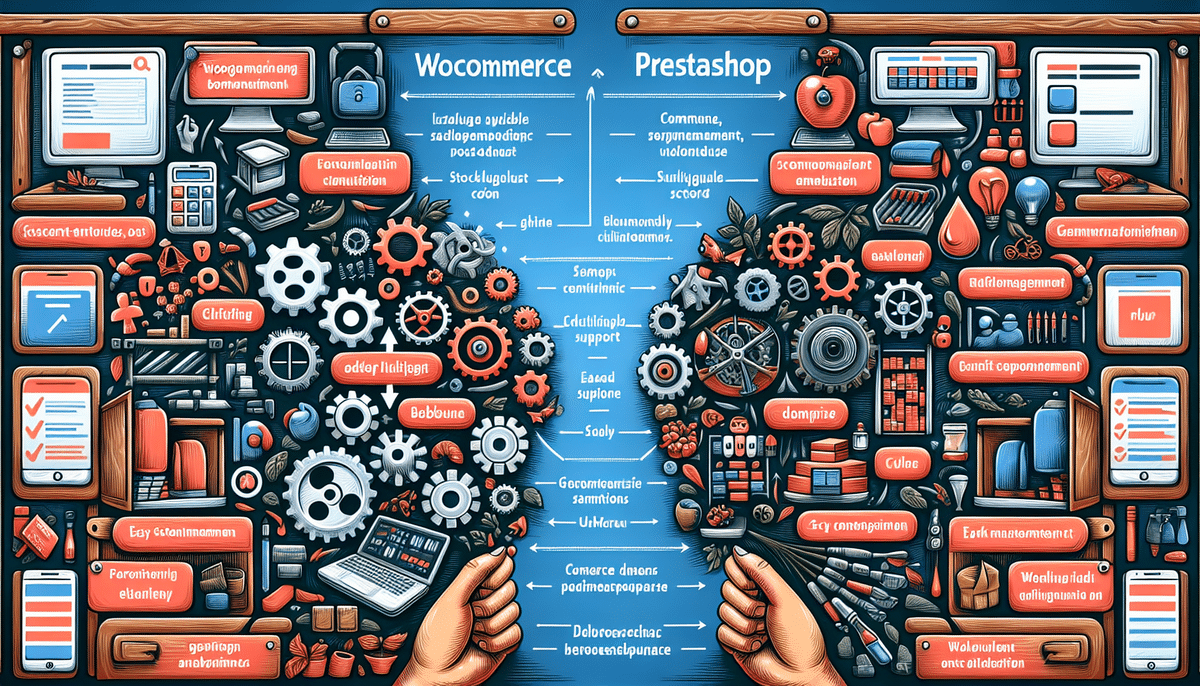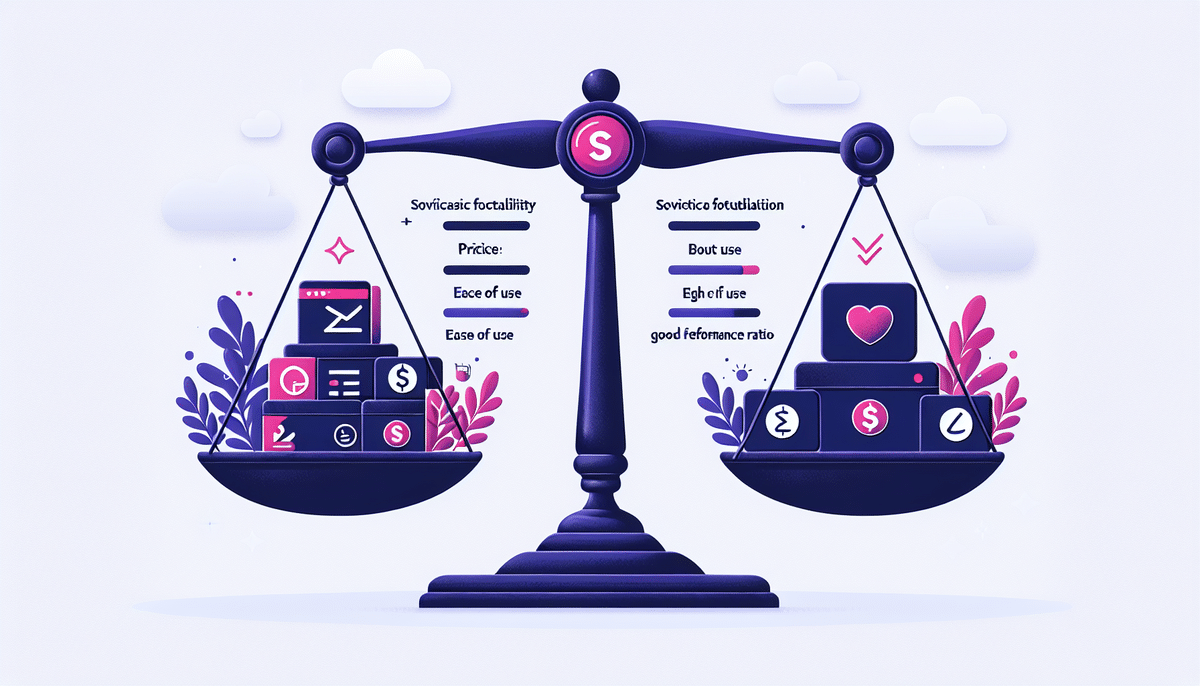Shopify vs WooCommerce: Comprehensive E-commerce Platform Comparison
Choosing the right e-commerce platform is crucial for the success of your online business. Shopify and WooCommerce are two of the most popular options available, each offering a range of features and functionalities to help businesses build and manage their online stores. In this article, we'll provide an in-depth analysis of both Shopify and WooCommerce, comparing them across various aspects such as ease of use, pricing, payment processing, security, SEO capabilities, extensions, customer support, and more.
Overview of Shopify
Shopify is a fully-hosted e-commerce platform that has been powering over 1.75 million businesses worldwide as of 2023.1 Launched in 2006, Shopify offers a user-friendly interface, a drag-and-drop website builder, customizable themes, integrated payment processing, inventory management, marketing tools, and more. Its all-in-one solution is ideal for users who prefer a hassle-free setup and comprehensive support.
Overview of WooCommerce
WooCommerce is an open-source e-commerce plugin for WordPress, which powers over 29% of all websites as of 2023.2 As a highly customizable platform, WooCommerce allows users to design and manage their online stores with extensive flexibility. It offers a vast array of extensions and integrates seamlessly with WordPress, making it a preferred choice for those already familiar with the WordPress ecosystem.
Detailed Comparison of Shopify and WooCommerce
Both Shopify and WooCommerce offer robust solutions for e-commerce, but they cater to different needs and preferences. Here's a detailed comparison to help you decide which platform aligns best with your business goals.
Ease of Use: Which Platform is Easier to Use?
Shopify is often considered the more user-friendly option, especially for beginners. Its intuitive drag-and-drop website builder allows users to create and customize their online stores without any coding knowledge. The user-friendly dashboard simplifies store management and order processing.
WooCommerce, while highly customizable, has a steeper learning curve. It requires familiarity with WordPress and some technical know-how to set up and manage effectively. However, once mastered, WooCommerce offers unparalleled flexibility and control over your online store.
Design & Customization: Which Platform Offers Better Design Options?
Both platforms offer a variety of themes and design options:
- Shopify provides a range of professionally-designed, responsive themes that can be customized to fit your brand's aesthetic.
- WooCommerce leverages the extensive library of WordPress themes and plugins, allowing for deeper customization and unique design possibilities.
If extensive design flexibility is a priority, WooCommerce may have the edge due to its integration with WordPress.
Features & Functionality: Which Platform Offers More Features?
Shopify boasts a wide array of built-in features, including payment processing, inventory management, SEO tools, and marketing integrations. Its app store offers over 6,000 apps to extend functionality further.3
WooCommerce offers essential e-commerce features out of the box and relies on plugins to add functionality. With access to over 55,000 WordPress plugins,4 WooCommerce can be tailored to meet virtually any business need.
Shopify's built-in features may be sufficient for many businesses, while WooCommerce offers greater flexibility through its extensive plugin ecosystem.
Pricing Models: Which Platform is More Affordable?
Shopify offers several pricing tiers:
- Basic Shopify: $29/month
- Shopify: $105/month
- Advanced Shopify: $399/month
Add-ons and apps can increase the monthly costs. Additionally, Shopify charges transaction fees ranging from 2.4% to 2.9% + 30¢ per transaction, depending on the plan.5
WooCommerce is free to download and use, but costs can arise from web hosting, domain registration, premium themes, and essential plugins. For example, quality hosting can range from $10 to $30 per month.6
While WooCommerce may appear more affordable initially, especially for small businesses or those on a tight budget, Shopify provides a more predictable monthly cost structure with comprehensive support.
Payment Processing: Which Platform Has Better Payment Options?
Shopify offers its own payment gateway, Shopify Payments, which integrates seamlessly and offers competitive transaction fees. It also supports a wide range of third-party payment gateways.7
WooCommerce supports numerous payment gateways, including PayPal, Stripe, and others. However, setting up these gateways may require additional configurations and technical steps.8
Shopify's integrated payments solution simplifies the process, making it a more straightforward option for businesses looking for ease of setup.
Security: Which Platform Offers Better Security Features?
Security is paramount for online stores. Both platforms prioritize security but approach it differently:
- Shopify is fully PCI compliant out of the box, offers SSL encryption, automatic backups, and regular security updates.
- WooCommerce requires users to manage their own security measures, including SSL certificates, security plugins, and regular updates to ensure compliance and protection.
For businesses seeking a hands-off approach to security, Shopify provides a more secure environment with minimal maintenance required from the user.
SEO Capabilities: Which Platform is More SEO-Friendly?
WooCommerce leverages WordPress's robust SEO capabilities, allowing for detailed optimization using plugins like Yoast SEO. This integration offers greater control over on-page SEO elements, such as meta tags, sitemaps, and URL structures.
Shopify provides essential SEO features, including editable title tags, meta descriptions, and automatic sitemap generation. Additionally, Shopify apps can further enhance SEO performance.9
While both platforms are capable of achieving strong SEO performance, WooCommerce's integration with WordPress gives it a slight advantage for those deeply invested in SEO strategies.
Apps and Add-ons: Which Platform Offers More Integrations?
Shopify boasts a robust app store with over 6,000 apps available to extend store functionality across various needs, including marketing, sales, customer service, and more.10
WooCommerce has access to the extensive WordPress plugin library, offering over 55,000 plugins that can integrate seamlessly with your store for enhanced functionality.11
WooCommerce offers a broader range of integrations due to the vast number of WordPress plugins, providing greater flexibility for specialized needs.
Customer Support: Which Platform Has Better Support Options?
Shopify offers 24/7 customer support through phone, email, and live chat. Additionally, it provides a comprehensive help center and community forums for self-service support.12
WooCommerce provides support primarily through email and community forums. While extensive documentation is available, it does not offer dedicated phone or live chat support. Users may need to rely on third-party resources or hire professionals for specialized assistance.13
Shopify's extensive support options make it a more reliable choice for businesses that require consistent and immediate assistance.
Pros and Cons of Shopify
Pros:
- Easy to use and set up with a user-friendly interface
- Comes with a range of built-in features, including marketing tools
- Offers its own integrated payment gateway, Shopify Payments
- 24/7 customer support via multiple channels
- Robust app store with over 6,000 apps available
Cons:
- Pricing plans can be expensive, especially with add-ons
- Limited product variations on lower-tier plans
- Customization can be restricted in certain areas
- Additional transaction fees if not using Shopify Payments
Pros and Cons of WooCommerce
Pros:
- Free to download and use, ideal for budget-conscious businesses
- Complete control over your online store's design and functionality
- Integrates seamlessly with WordPress, enhancing SEO capabilities
- Access to over 55,000 WordPress plugins for extensive customization
- No additional transaction fees beyond payment gateway charges
Cons:
- Requires more technical knowledge to set up and manage
- No built-in marketing tools; reliant on plugins
- Users must manage their own payment gateway integrations
- Some necessary plugins and extensions can be costly
Conclusion: Choosing the Right E-commerce Platform
Both Shopify and WooCommerce offer a comprehensive set of features and functionalities to help businesses build and run successful online stores. The choice between the two ultimately depends on your specific needs, technical expertise, budget, and business goals.
Choose Shopify if:
- You desire a user-friendly platform that's easy to set up and manage
- You want a range of built-in features, including integrated marketing tools
- You are willing to invest in additional apps and features for enhanced functionality
- You require 24/7 customer support available via phone, email, and live chat
Choose WooCommerce if:
- You seek complete control over your online store's design and functionality
- You are familiar with WordPress and wish to leverage its SEO strengths
- You're comfortable with a steeper learning curve and can manage technical aspects
- You're operating on a tight budget or prefer to avoid transaction fees beyond payment gateway charges
Ultimately, the decision between Shopify and WooCommerce hinges on your individual business requirements. Consider factors such as ease of use, customization needs, budget constraints, and the level of control you desire to determine which platform aligns best with your e-commerce ambitions.
It's also worth noting that while Shopify and WooCommerce are leading e-commerce platforms, other options like Magento, BigCommerce, and Squarespace offer unique features and benefits. Evaluate each platform's offerings to ensure you select the one that best fits your business needs.






















